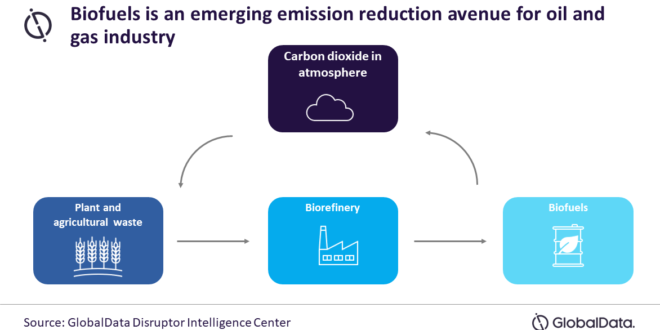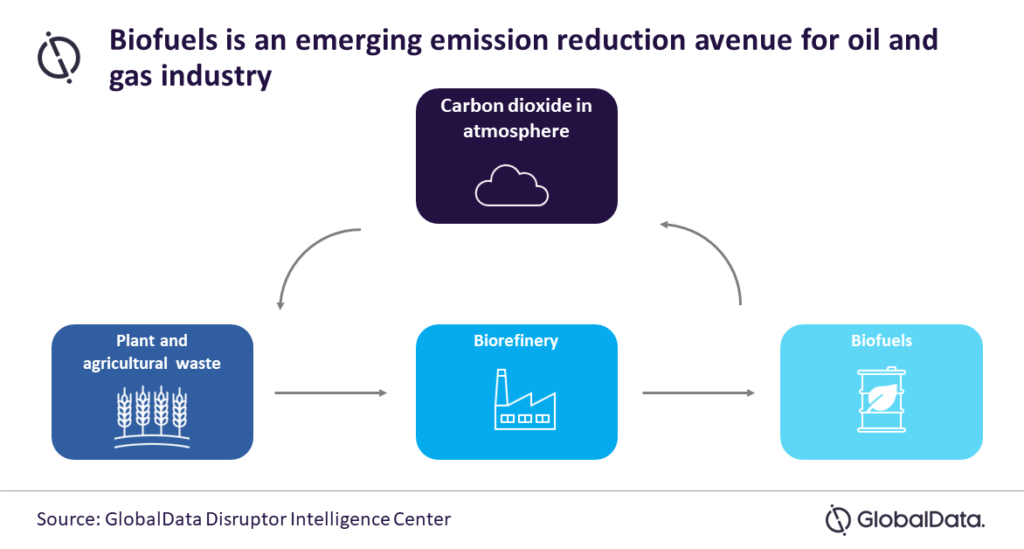Emission mitigation technologies will play a key role in reducing the environmental impact of oil and gas operations as the industry’s energy transition takes place. Methods and alternatives such as carbon capture, hydrogen, renewable power, biofuels, energy storage, and electric vehicles, will be adopted by oil and gas companies to mitigate their net emissions, says GlobalData, the data and analytics company.
GlobalData’s thematic report, Energy Transition in Oil & Gas, identifies and analyses the emission reduction methods available to oil and gas industry for decarbonisation. It also highlights the competitive positions of major oil and gas companies, such as BP, TotalEnergies, Shell, Chevron, ExxonMobil, and Equinor, in the energy transition theme. It further identifies oil and gas industry leaders and challengers in the various energy transition avenues and discusses corresponding use cases within the oil and gas industry.
Anson Fernandes, Oil and Gas Analyst at GlobalData, comments: “The oil and gas industry undertakes a variety of emission-intensive operations across its sectors. These include activities such as exploration and production, liquefaction, and refining. Industrial processes and practices such as gas flaring release significant amounts of GHG emissions into the atmosphere.”
The 2021 UN Emissions Gap report revealed that current pledges to curb emissions would commit the world to a global temperature rise of at least 2.7°C this century. The current efforts to tackle climate change are falling well short of averting dangerous warming scenarios, with a reduction in annual emissions of at least 13 gigatons of CO2 equivalent (GtCO2e) required to keep the Paris Agreement climate change target—to limit global warming to 1.5°C compared to pre-industrial levels—alive.
Fernandes continues: “The oil and gas industry will feel international pressure acutely, as progress towards an energy transition becomes a particular point of scrutiny. Leading oil and gas players have set themselves decarbonisation targets for both the medium and long-term, relying on both existing and emerging technologies.”
The oil and gas industry’s energy transition requires long-term planning to reduce or eliminate carbon emissions. In the short-term, oil and gas players must incorporate transition fuels as well as low-carbon and zero-carbon energy sources in their portfolios.
Low carbon technologies include the use of unconventional but abundant energy sources such as biomass/renewable fuels. This group of technologies generates some residual carbon emissions, even if they are many times cleaner than conventional energy sources. Moving ahead, the oil and gas industry is expected to increase its adoption of zero-carbon sources of energy, with alternatives such as solar power, wind power, and hydrogen power becoming increasingly popular.
Fernandes concludes: “Leading oil and gas companies have actively pursued diverse energy transition avenues, from renewable power to biofuels. Major oil companies, such as BP, TotalEnergies, Shell, ExxonMobil, and Chevron have set themselves net zero emission targets for 2050. They are expected to further increase their exposure to energy transition avenues in order to decarbonise their business.”
 Engineer News Network The ultimate online news and information resource for today’s engineer
Engineer News Network The ultimate online news and information resource for today’s engineer





